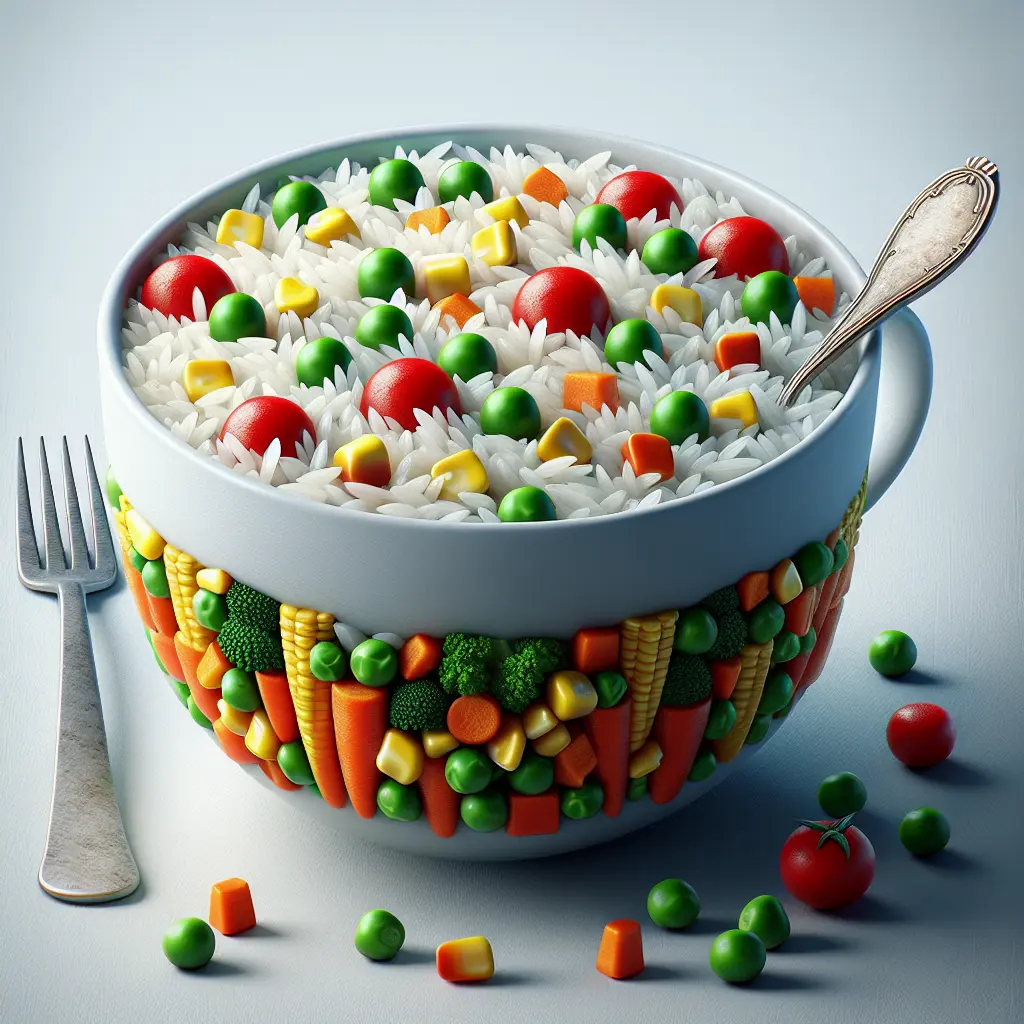Rice and Vegetables: A Culinary Symphony of Health and Nutrition
Rice and vegetables, a culinary duo that has graced dinner tables for centuries, embodies a perfect harmony of taste and nourishment. This classic combination offers a comprehensive array of essential nutrients that play a crucial role in supporting our overall health and well-being.
Nutritional Powerhouse
Rice, a staple food for over half of the world's population, is an excellent source of complex carbohydrates. These carbohydrates provide a sustained release of energy, keeping us feeling full and energized throughout the day. Additionally, rice is a good source of dietary fiber, which aids in digestion, promotes satiety, and helps regulate blood sugar levels.
Vegetables, the vibrant hues that adorn our plates, are nutritional powerhouses packed with an array of vitamins, minerals, and antioxidants. They are an excellent source of vitamins A, C, and K, as well as minerals like potassium, magnesium, and iron. Antioxidants, the body's defense against harmful free radicals, are abundant in vegetables and help protect our cells from damage.
Healthful Harmony
The combination of rice and vegetables creates a synergistic effect, enhancing the health benefits of each component. The carbohydrates in rice provide a steady stream of energy, while the fiber in vegetables promotes satiety and aids in weight management. The vitamins and minerals in vegetables complement the nutritional profile of rice, ensuring a well-rounded intake of essential nutrients.
Furthermore, rice and vegetables have a low glycemic index, meaning they release glucose slowly into the bloodstream, helping maintain stable blood sugar levels. This makes them a suitable choice for individuals with diabetes or prediabetes.
Versatile Culinary Canvas
Rice and vegetables offer endless culinary possibilities, allowing for a wide range of flavorful and nutritious dishes. From stir-fries to pilafs, salads to casseroles, this dynamic duo can be incorporated into a variety of cuisines and preparations.
- Stir-fries: A quick and easy way to enjoy rice and vegetables is to stir-fry them with your favorite sauce and protein. This method retains the vibrant colors and nutrients of the vegetables while creating a flavorful and satisfying meal.
- Pilafs: Pilafs are a traditional rice dish cooked in broth with spices and often vegetables. They are a flavorful and aromatic accompaniment to main courses or can be enjoyed as a standalone meal.
- Salads: Rice and vegetables can be combined to create refreshing and nutritious salads. Add your favorite dressing, protein, and other toppings to customize your salad to your liking.
- Casseroles: Casseroles are a hearty and comforting dish that can be easily made with rice and vegetables. Simply combine your desired ingredients in a casserole dish, top with cheese or breadcrumbs, and bake until golden brown.
Incorporating Rice and Vegetables into Your Diet
Incorporating rice and vegetables into your diet is simple and rewarding. Here are a few tips to get you started:
- Aim to include at least one serving of vegetables at every meal.
- Substitute white rice with brown rice or other whole grains for added fiber and nutrients.
- Experiment with different cooking methods, such as stir-frying, roasting, or steaming, to preserve the nutrients and flavors of vegetables.
- Add vegetables to your rice dishes, such as stir-fries, pilafs, or casseroles, to boost their nutritional value.
- Pack rice and vegetable dishes for lunch or snacks to ensure you have healthy options throughout the day.
By embracing the power of rice and vegetables, you can enjoy a balanced and nutritious diet that supports your overall well-being. So, next time you're looking for a healthy and satisfying meal, consider pairing rice with a vibrant array of vegetables. Your body and taste buds will thank you!
How many calories are in Rice And Vegetables?
Each 1 cup of Rice And Vegetables contains 208 calories.
Rice And Vegetables Nutritional Information
| Nutrient | Amount per 1 cup (187g) |
|---|---|
| Calories | 208 Calories |
| Protein | 5g |
| Fat | 2.7g |
| Saturated Fat | 0.3g |
| Cholesterol | 0mg |
| Carbohydrates | 40g |
| Dietary Fiber | 2.3g |
| Sugar | 2.8g |
| Sodium | 0.228mg |
| Potassium | 0.1484mg |
| Calcium | 0.028mg |
| Iron | 0.0008mg |
